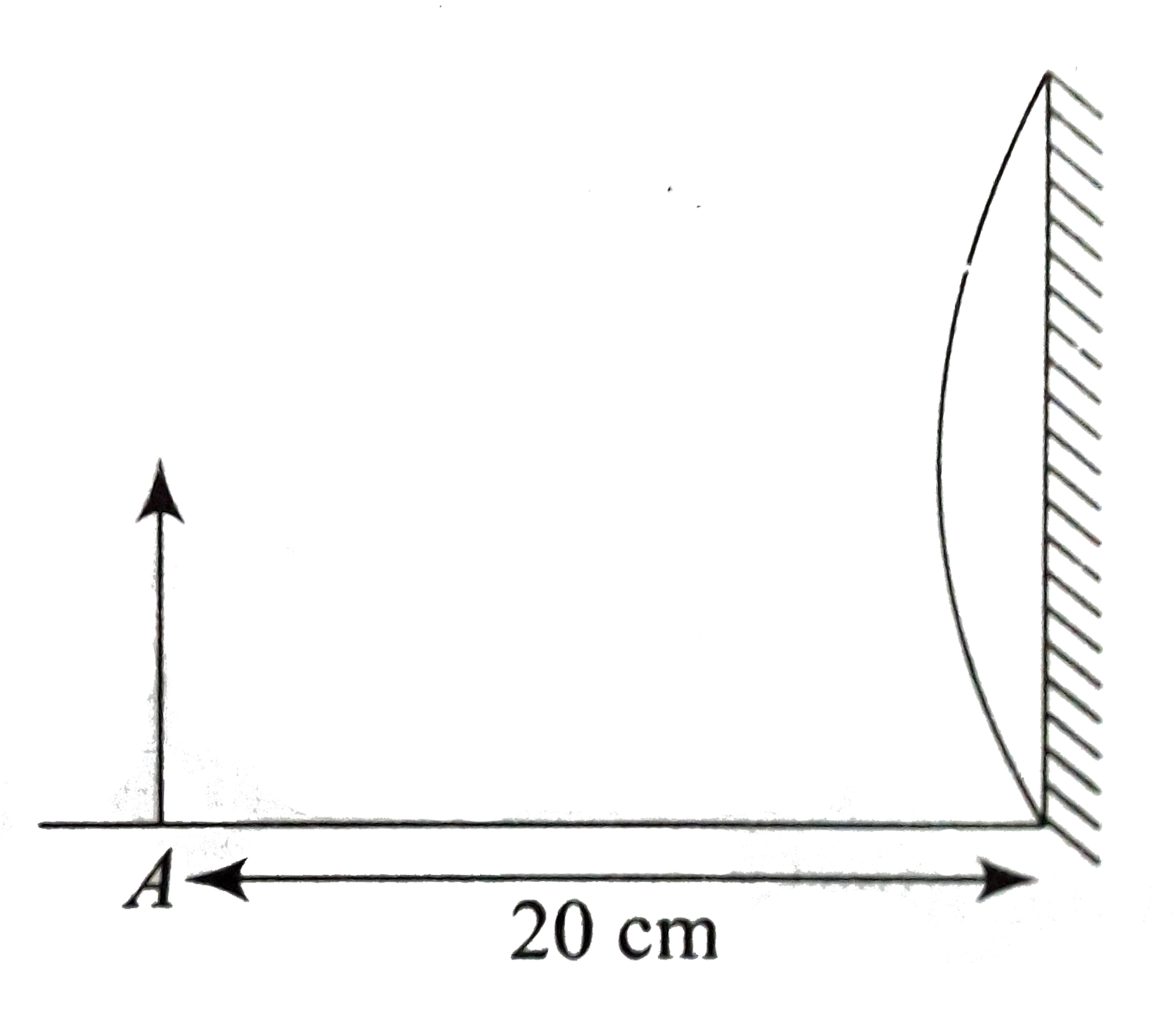The focal length of a plano-concave lens is -10 cm , then its focal length when its palne surface is polished is
20 cm
−5cm
5 cm
−20cm
The correct Answer is:C
To find the focal length of a plano-concave lens when its plane surface is polished, we can follow these steps:
Step 1: Understand the Given Information
We are given that the focal length of the plano-concave lens is f=−10cm. The negative sign indicates that it is a diverging lens.
Step 2: Use the Lensmaker's Formula
The Lensmaker's formula for a lens is given by:
1f=(μ−1)(1R1−1R2)
Where:
- f is the focal length of the lens,
- μ is the refractive index of the lens material,
- R1 is the radius of curvature of the first surface,
- R2 is the radius of curvature of the second surface.
Step 3: Assign Values for the Plano-Concave Lens
For a plano-concave lens:
- The radius of curvature of the concave surface R1=−20cm (since it is concave, it is negative),
- The radius of curvature of the plane surface R2=∞ (since it is flat).
Step 4: Substitute Values into the Formula
Substituting the values into the Lensmaker's formula:
1−10=(μ−1)(1−20−0)
This simplifies to:
1−10=(μ−1)(−120)
Step 5: Solve for the Refractive Index μ
Rearranging gives:
μ−1=1/101/20=2
Thus,
μ=3
Step 6: Calculate the Focal Length After Polishing
When the plane surface is polished, the lens becomes a biconvex lens with both surfaces contributing to the focal length. The new configuration will have:
- R1=−20cm (concave surface),
- R2=20cm (convex surface).
Now, we will use the Lensmaker's formula again:
1f′=(μ−1)(1R1−1R2)
Substituting the values:
1f′=(3−1)(1−20−120)
This simplifies to:
1f′=2(−120−120)=2(−220)=−420=−15
Step 7: Solve for f′
Thus:
f′=−5cm
The focal length of the polished plano-concave lens is 5cm (positive, indicating it is now a converging lens).
Final Answer
The focal length when the plane surface is polished is 5cm.
---
We are given that the focal length of the plano-concave lens is f=−10cm. The negative sign indicates that it is a diverging lens.
The Lensmaker's formula for a lens is given by:
1f=(μ−1)(1R1−1R2)
Where:
- f is the focal length of the lens,
- μ is the refractive index of the lens material,
- R1 is the radius of curvature of the first surface,
- R2 is the radius of curvature of the second surface.
For a plano-concave lens:
- The radius of curvature of the concave surface R1=−20cm (since it is concave, it is negative),
- The radius of curvature of the plane surface R2=∞ (since it is flat).
Substituting the values into the Lensmaker's formula:
1−10=(μ−1)(1−20−0)
This simplifies to:
1−10=(μ−1)(−120)
Rearranging gives:
μ−1=1/101/20=2
Thus,
μ=3
When the plane surface is polished, the lens becomes a biconvex lens with both surfaces contributing to the focal length. The new configuration will have:
- R1=−20cm (concave surface),
- R2=20cm (convex surface).
1f′=(μ−1)(1R1−1R2)
Substituting the values:
1f′=(3−1)(1−20−120)
This simplifies to:
1f′=2(−120−120)=2(−220)=−420=−15
Thus:
f′=−5cm
The focal length of the polished plano-concave lens is 5cm (positive, indicating it is now a converging lens).
The focal length when the plane surface is polished is 5cm.
Topper's Solved these Questions
- RAY OPTICSBOOK - DC PANDEY ENGLISHCHAPTER - RAY OPTICSEXERCISE - A. Only one option is correct (JEE Advance)
73 Videos
- RAY OPTICSBOOK - DC PANDEY ENGLISHCHAPTER - RAY OPTICSEXERCISE - B. More than one option is correct
20 Videos
- PROPERTIES OF MATTERBOOK - DC PANDEY ENGLISHCHAPTER - PROPERTIES OF MATTEREXERCISE - Integer
8 Videos
- ROTATIONBOOK - DC PANDEY ENGLISHCHAPTER - ROTATIONEXERCISE - (C) Chapter Exercises
39 Videos
Similar Questions
A plano-convex lens is made of flint glass, its focal length is
View SolutionThe focal length of a concave mirror is 10 cm. Find its radius of curvature.
View SolutionThe dispersive power of the material of a lens is 0.04 and the focal length of the lens is 10cm. Find the difference in the focal length (in mm) of the lens for violet and red colour.
View SolutionThe radius of curvature of curved surface of a thin plano-convex lens is 10cm and the refractive index is 1.5. If the plano surface is silvered, then the focal length will be.
View SolutionA convex lens A of focal length 20cm and a concave lens B of focal length 10 cm are kept along the same axis with a distance d between them. If a parallel beam, then d is
View SolutionA convex lens A of focal length 20cm and a concave lens B of focal length 10 cm are kept along the same axis with a distance d between them. If a parallel beam, then d is
View SolutionIn a compound microscope , the magnificent virtual image is found at a distance of 25 cm from the eye-piece . The focal length of its objective lens is 1 cm. If the microspore is 20 cm , then the focal length of the eye-piece lens ( in cm) is .................
View SolutionThe refractive index of a material of a plano-concave lens is 53, the radius of curvature is 0.3 m. The focal length of the lens in air is
View SolutionFor a telescrope, focal length of objective lens is 15 cm and focal length of eye piece is 10 mm. if tube length is 16 cm, then find the magnification.
View SolutionFocal length of the plano-convex lens is 15cm. A small object is placed at A as shown in figure. The plane surface is silvered. The image will form at

View Solution
